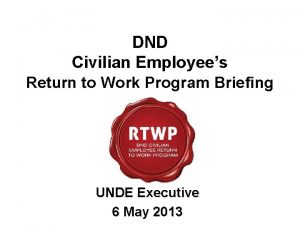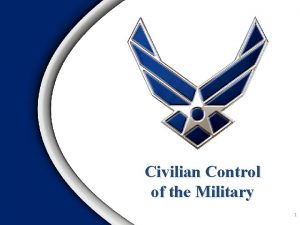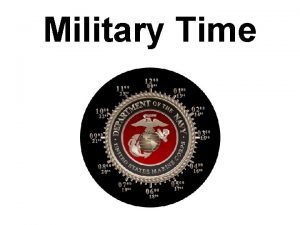Civilian Control of the Military What are the








- Slides: 8

Civilian Control of the Military

What are the Roots of Civilian Control? • King George III control of the military • Quartering Act • Revolutionary War • Violation of Colonist’s Rights as British Citizens • Tradition of Civilian Militias in the colonies (Today the national guard)

What where the Challenges during the Critical Years • • • Western territory Spanish in Florida and Louisiana British in the Great Lakes Region Shays Rebellion These challenges led to a call for a national military

US Constitution and the Military • “Insure domestic tranquility” and to “provide for the common defense. ”: • Article I: raise an army and navy – Two year limit on federal appropriations for the military – Calling forth militia to execute laws, suppress insurrections, and to repel invasions. – Used necessary and proper clause to build and arm the military – Power to tax transfer power of the military from the states to the federal government • Article II: President Commander and Chief • Article III: defined the crime of Treason as levying war against the US or giving aid and comfort to America’s enemies

What amendments addressed the Fears of a Standing Military? • 2 nd Amendment guaranteed the “right to bear arms” • 3 rd Amendment “prohibited quartering of troops” in private homes without the consent of the owner and only in a manner prescribed by law. • These amendments restrained the federal government while legitimizing and armed citizenry

Sword of the Republic • Henry Knox: first Secretary of the War Department(Secretary of Defense) • Secretary of Defense Now: Acting U. S. Secretary of Defense Patrick Shanahan • 1790 and 1791 Failure of army against Native Americans led to strengthening of the military • May 2, 1792: Calling Forth Act/ defined powers of president to call out militia(national guard) in an emergency (3 months in any one year)

Uniform Militia Act • Legion of the United States • All able bodied men 18 to 45 to enroll for service. • Many short comings – States added numerous exemptions for service requirements – Did not provide for a select corps from each state – Federal gov’t did not have control of office training – Most troops had to provide their own weapons and supplies.

• Developed a strong navy to try to counter balance the British, Spanish, or the French















